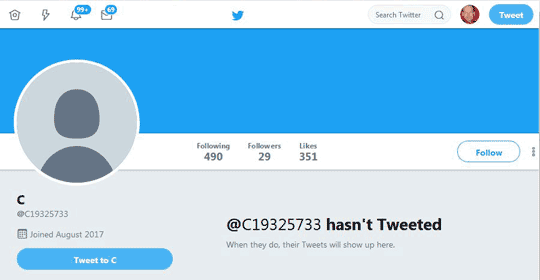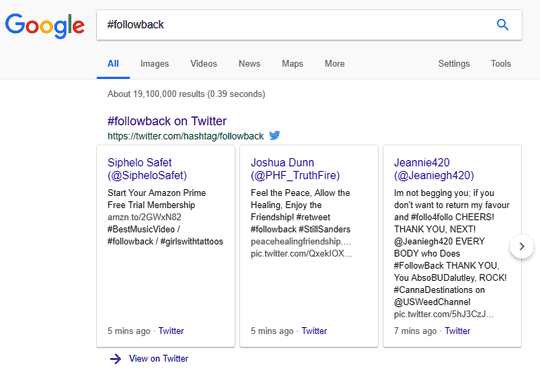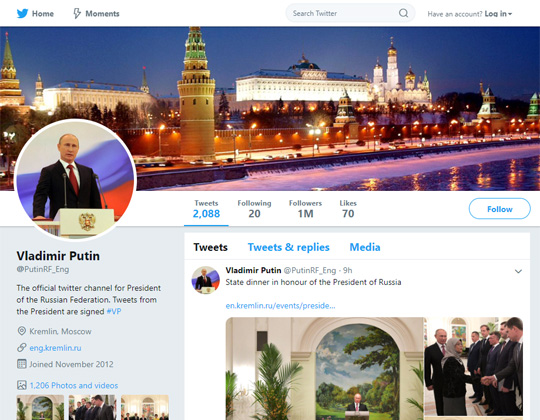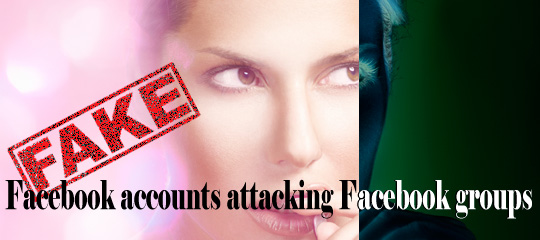Social media is a “thing”. It is a world unto itself. But we can’t forget that behind the avatars, behind the selfies, behind the smirky and the sentimental and the angry and the curious, there are real people.
For a business, this is particularly important. Bots don’t buy things. At least not yet. A business needs real people to interact with.
So when you set out to build a social media following, how do you make sure that the people following you are, well… people?
I was talking about this with Jamie at MyUKmailbox. Jamie relies on reaching people all over the world who want to shop in the UK, but can’t, for one of two reasons. They might be unable to get there to shop in person, perhaps being an ocean away. Or they might want to buy things that don’t ship to their country. Think the guy in Seoul or Lagos or Santiago who wants to buy something that ships only in Europe.
The nature of his business is such that he won’t get foot traffic. He’s not trying to interact with people close by; he’s trying to interact with people across the ocean. So he has to rely on social media. He wants lots of followers, of course. But he doesn’t need to impress anybody with huge numbers of followers. He needs to connect with real people, so he needs followers who are real people.
Two Formulas For Recognizing Real People
Jamie does triage when networking on social media. He gave me four criteria he uses to tell if a social media account is real:
- It must have a real avatar, like a face of a person
- All details (name, description etc.) are filled in, so it’s a complete profile
- There must be a recent post, something to show activity
- It isn’t following a bunch of bots (to be honest, I’m not sure how he checks for that one)
These are good tips. They help identify non-people, who would just clutter up one’s Twitter account, so we can avoid following those non-people.
Unlike Jamie, I am actively trying to keep my numbers high, because I am most interested in increasing my reach on social media. But I also care about following real people and being followed by real people. Why? Because my reach is not just about how many followers read my posts. It is also about how many of their followers do. So I want retweets. I want stuff to get picked up and included in their blogs. In short, I want to reach real people.
Who Should You Follow?
So I follow people on Twitter, with the hope that they will follow me back. But whom should I follow? How can I tell if an account is real?
1. Like Jamie, I look for an avatar. No avatar, no follow. Although a real person might not have an avatar, it’s rare. And a real person without an avatar is unlikely to be a high user anyway, nor would they carry much credibility if they did retweet me.
2. I look at the language. I have no need of Arabic or German or Russian followers. I don’t speak those languages and I can’t read their posts (and they are unlikely to be able to read mine). And, although I am fluent in French and somewhat so in Spanish, I never post in those languages. So English it is!
3. I look to see if the description makes sense. A list of keywords is not likely to be a real person, although sometimes it is. I particularly avoid those whose description is #followback or mentions getting free or paid followers.
Those will be either bots or people with no interest in using the platform; they are on Twitter just to sell you and me…wait for it…bot followers! Yeah, right. Just what we need..
4. I pay attention also to the cover image. If it’s pornographic, no thanks. If it’s an image about getting followers, again I leave it be. I’m not keen on anything sketchy, either, but that’s up to you to decide where to draw that line.
5. I stay away from big companies. Small businesses are fine. Many of them follow back, and some of them interact…especially online businesses that understand the power of social media. But big companies like Amazon and Apple and big media like the BBC or CNN generally just broadcast their news on Twitter. They won’t follow me back and they won’t retweet my posts.
6. I stay away from politically charged accounts. I don’t mind following someone who tweets about politics on occasion, but if an account looks like politics is its reason for existing, no way. Besides, it’s probably a Russian account, anyway.
Nor will I follow any politicians or similar leaders. They won’t follow me back, and if they do, they surely won’t interact.
I don’t stay away from any other topics. I try to reach a wide variety of markets, but that’s the nature of my business. I do seek out people involved in writing, marketing and entrepreneurship. To a lesser extent, I seek out people involved in tech and lifestyle (such as fitness bloggers or travel bloggers).
This reflects my business audiences, including both my client base and those people who might want to retweet or blog my materials. It also reflects my interests to a large degree.
Your business might be different. Indeed, it probably is. Consider who your target market is and who might be likely to want to retweet your thoughts and links. Those will be your two main groups of target followers. The first are people you want to sell to. The second are people who can reach the people you want to sell to.
Remember that if you want real success in the virtual world, you need to connect with real people. Not with bots. Not with Russians pretending to be American or British or Canadian. Until bots start earning paychecks and cyber spies need supplies, there’s no profit in selling to them.
Note from Editor – Check out this related post about fake accounts on Facebook: EXPOSED! Fake Facebook Accounts Attacking Facebook Groups
[Main image: Pixabay, Robin Higgins; Woman: iStockphoto, Millann; other images from their respective websites and/or social platforms]
David Leonhardt is a social media addict and a writer. He and his team can write your posts and promote them on social networks such as Google Plus, Twitter, LinkedIn, Pinterest, StumbleUpon, FaceBook and elsewhere.




